Composting
Build a worm farm for $20
Janet Luke
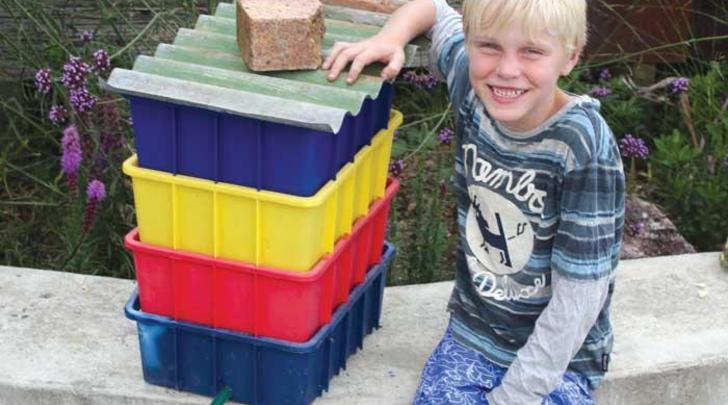
Worm farming can be for everyone. A worm farm doesn’t take much space and is a wonderful green way to get rid of waste that normally goes straight to landfill such as food scraps, shredded paper and even dust from the vacuum cleaner bag. In return your worms will give you a constant supply of liquid fertiliser and soil which your garden will love.
There are lots of commercial worm farms available in all manner of sizes, designs and prices. But building your own is easy and you can use recycled or spare containers you may have laying around. Follow these simple steps and you will be a farmer to 40,000-odd worms in no time!
You’ll need…
- drill
- 2 drill bits – one around the diameter of a pencil, the other the diameter of a garden hose
- 4 same-size, stackable plastic boxes about 40cm x 30cm, or smaller if the worm farm is for a family of two (I bought my stackable boxes from the local Home Hardware store for $5 each. Alternatively you can use Styrofoam boxes. Try asking your friendly green grocer or fish shop for free ones.)
- 5cm-long piece garden hose or garden irrigation pipe
- soil, peat or shredded damp newspaper
- small cup of food scraps (no meat)
- piece of hessian sack, carpet or wet newspaper the same size as your boxes
- lid that will keep the rain out, such as a plastic tray, piece of wood or a real estate sign cut to shape
- old bucket, pail etc to catch the worm wee
- sealant such as silicone rubber, available from any hardware store (optional)
- 1000 red or tiger worms. These are available from commercial worm farmers (yes, there is such a person!) and can even arrive via mail-order (just Google ‘buying worms’, or ask at the garden centre). Alternatively ask a friend with a thriving worm farm for a few handfuls of theirs – if their farm is healthy the population should bounce back in no time.
Step-by-step guide
Step 1
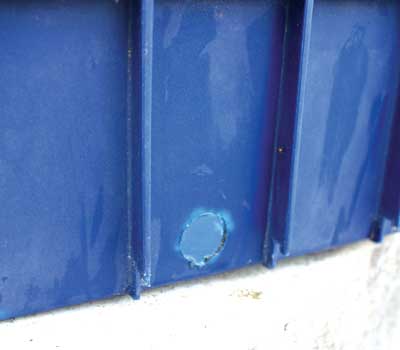
Using the largest drill bit attached to your drill, make a hole in one of the plastic boxes through the side edge near the base.
Step 2
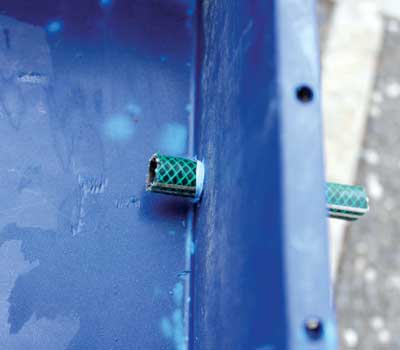
Push the length of garden hose through the hole. If it’s not a tight fit you can seal it with silicone rubber or similar to stop drips. This hose will drain away the black fluid your worms will make into a bucket to be used on the garden.
Step 3
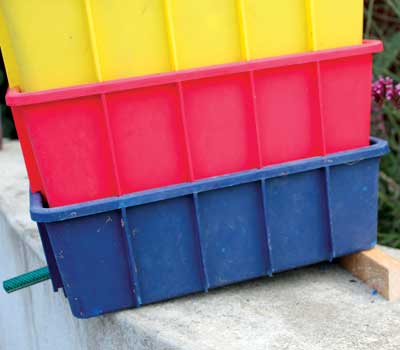
The box with the hose in it will be the base of the worm farm. Place it on some bricks, rocks or an outdoor table so you are able to fit a bucket under the drainage hose. Position it on an angle so fluid can flow out.
Step 4
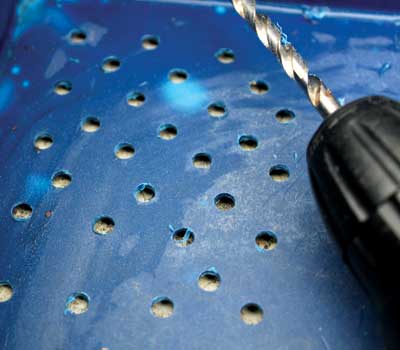
In the bottom of each of the remaining three boxes make about 40 small holes using the smaller drill bit. The holes need to be slightly bigger than a worm. The worms will use these holes to travel up through the stacked boxes.
Step 5
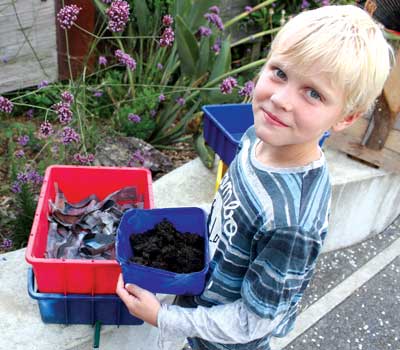
Place one of your boxes with holes on top of the base unit. Put some soil or peat or shredded newspaper in, along with your worms. Sprinkle with water and spread a handful of kitchen scraps on top of the worms to get them started.
Step 6
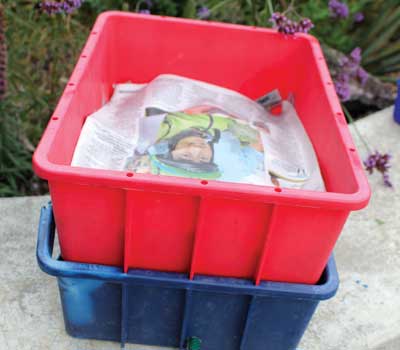
Cover your worms with the hessian sack, damp newspaper or carpet then place your lid on the top of the bin. I put a brick on the lid to stop it blowing off. The lid is important as worms like a dark, moist environment and it also stops birds eating your livestock! Hang on to your other two boxes – you’ll start using them later.
Step 7
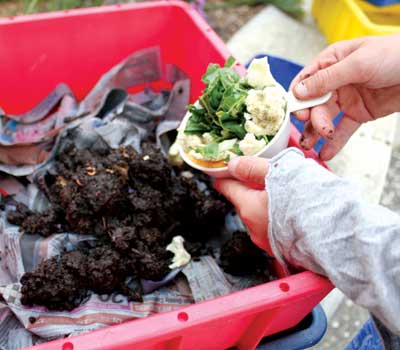
Continue feeding the worms with kitchen scraps as they become available, until the bin is full right to the top. Worms eat their own body weight each day. I was guilty of that over Christmas!
Step 8
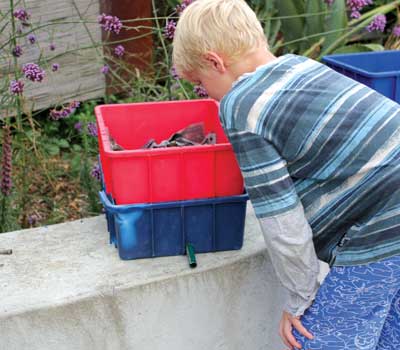
When your first box is full to the top, take off the sack etc and stack another box on top. Add a handful of food scraps to the top box. This is where your daily food scraps now go. The worms will wriggle their way into their new penthouse to reach the new food.
Step 9
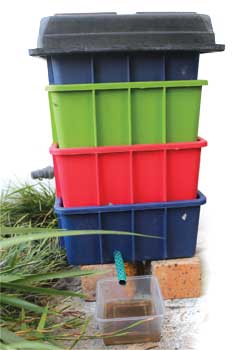
Continue this process until your last box is nearly full. By now the bottom layer (the one that sits on the base) will have been turned into soil – so pull it out, dig the soil into the garden, and put it back on the top of the worm farm stack, ready to fill with new scraps
Worm farming basics
- Worms don’t like meat, bread, pasta or citrus peel.
- To get the worms out of a layer before you tip the soil into the garden, simply place it on top of the upper box, without a lid, in the sun. Any worms left in the layer will move down into the lower box away from the light.
- It doesn’t matter if some liquid remains in the base unit, so long as enough drains out that your worms don’t drown.
- The worm wee that collects in your bucket is a powerful fertiliser – dilute it about 1:10 with water before sloshing liberally around the garden.
